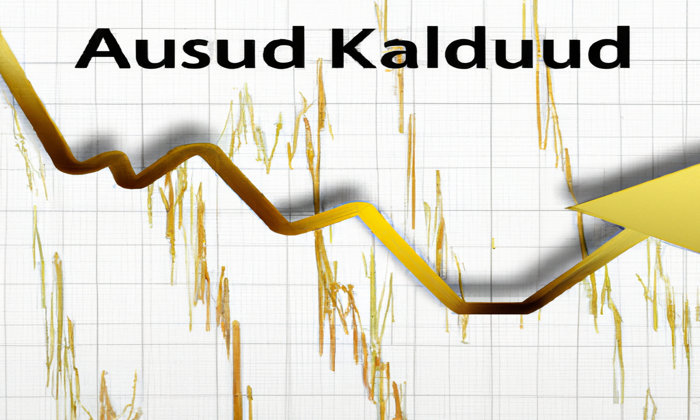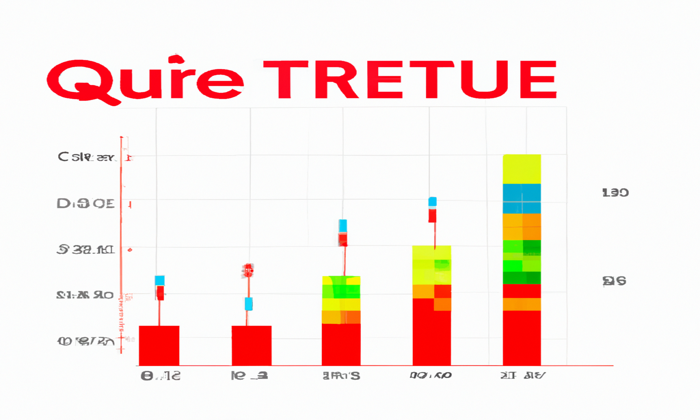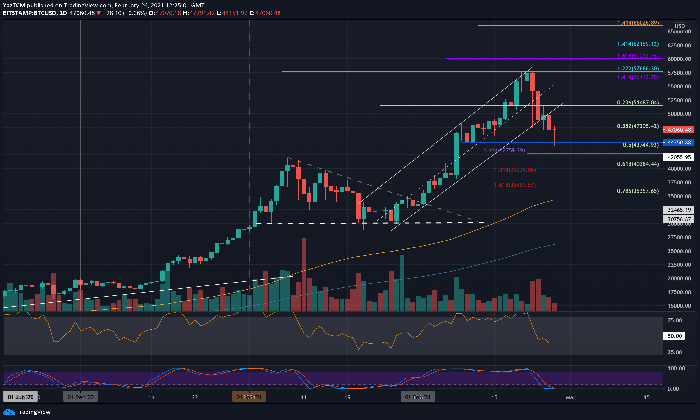Recent developments regarding Mt. Gox Bitcoin transfers have stirred significant attention in the crypto community, particularly as the now-defunct exchange moved 11,833.6 BTC, valued at approximately $931 million, to new addresses. This transaction has reignited fears of a potential sell-off, echoing past concerns about the Bitcoin market’s vulnerability to major exchanges. The ongoing Mt. Gox bankruptcy proceedings add another layer of intrigue, leaving many to ponder how these transfers might influence Bitcoin price predictions. Given the heightened anxiety surrounding cryptocurrency exchanges and the repercussions of past disasters, many traders remain on edge. These activities underscore the need to carefully monitor Mt. Gox’s remaining Bitcoin and its potential impact on current and future market dynamics.
The implications of recent transactions from Mt. Gox extend beyond mere numbers; they represent a critical junction for the cryptocurrency landscape. As Bitcoin continues to show volatility, especially amidst looming concerns about liquidation during Mt. Gox’s prolonged bankruptcy, the focus turns to how these exchanges shape market perceptions. The fear of a Bitcoin sell-off looms large, prompting investors to reconsider their positions amidst fluctuating price expectations. With a considerable amount of Bitcoin still held by Mt. Gox and the specter of repayments to creditors on the horizon, the situation necessitates acute vigilance among cryptocurrency enthusiasts and investors alike. In light of these movements, assessing the overall impact on the Bitcoin market remains essential for navigating future trading and investment strategies.
The Implications of Mt. Gox Bitcoin Transfers on Market Sentiment
The recent move by Mt. Gox to transfer 11,833.6 Bitcoin to new addresses brings significant implications for market sentiment. Historically, transactions of this magnitude have evoked concerns among traders about potential sell-offs, notably due to the bankrupt exchange’s prior issues that led to the loss of over 800,000 Bitcoin. The $931 million worth of Bitcoin transferred could signal a forthcoming liquidation event or repayments to creditors, which is a fear that lingers in the minds of many investors trader as they gauge the impact on the broader Bitcoin market. With many retail traders unsure of how these developments may affect their investments, anxiety is palpable, leading to speculation about whether Bitcoin could see further price drops in light of these transfers.
In addition, market watchers are paying close attention to patterns of behavior in response to Mt. Gox transactions. Benign responses to significant on-chain movements have historically followed large transactions, suggesting that the market might absorb these trades without significant fallout. However, with the current cryptocurrency landscape being affected by ongoing Bitcoin sell-off concerns, many anticipate that the prevailing bearish market sentiment could amplify the reaction to Mt. Gox’s actions. Consequently, participants in the Bitcoin ecosystem are left to navigate an uncertain terrain, fueled by speculation and past experiences.
Moreover, the ongoing bankruptcy proceedings of Mt. Gox further complicate the situation. The exchange’s long-standing struggles to process creditor claims have drawn attention to how unresolved issues could affect the Bitcoin market and pricing. With a substantial amount of Bitcoin still held in custody, any forthcoming movements on these assets will not only influence the price but also shape investor confidence. The fear of large-scale liquidations looms large, and traders, especially smaller investors who heavily engage in social media discussions around Bitcoin, are scanning for signs of capitulation. In the face of heightened market volatility, prudent investors are evaluating their positions, and sentiment surrounding Bitcoin remains primarily pessimistic as they brace for potential impacts from Mt. Gox’s activities.
Understanding the Mt. Gox Bankruptcy and Its Impact on Bitcoin Price Predictions
The ongoing Mt. Gox bankruptcy situation serves as a critical case study for understanding the dynamics of Bitcoin price predictions. Since the exchange’s collapse in 2014, the market has grappled with the ramifications of its activities, including the notorious loss of 800,000 Bitcoin. The uncertainty surrounding the eventual outcome of the bankruptcy process has led many analysts to opine on how such events shape investor behavior and future price trajectories. As the scheduled repayment deadline looms on October 31, 2025, there is a consensus among traders that any indication of repayments could trigger intense buying or selling pressure depending on how confident the market feels about the capacity of Mt. Gox to fulfill these obligations.
Historically, such events have been known to create spikes in Bitcoin’s volatility. As anxious traders flood the market, attempting to preemptively mitigate losses or capitalize on anticipated recovery, price predictions become increasingly speculative. For instance, analysts like Arthur Hayes postulate potential price floors for Bitcoin, suggesting that it could stabilize at around $70,000 as liquidity flows from Mt. Gox. However, with the market currently facing a downward trend, any sudden influx of Bitcoin, whether for payments to creditors or unintended sell-offs from institutional investors, could signify catastrophic shifts in price, especially as investor confidence hangs in the balance.
Furthermore, the importance of understanding the context of the Mt. Gox case in relation to other cryptocurrency exchanges is heightened during these uncertain market conditions. With several exchanges attempting to navigate similar pressures and potential regulatory challenges, the comparison serves as a guiding light for predicting Bitcoin’s market movements. The deterioration of trust in exchanges has wider implications for market liquidity, pushing some investors towards decentralized finance solutions as safeguards against future disasters. As price predictions evolve, reflecting the sentiment driven by Mt. Gox’s fate, the narrative of Bitcoin is continuously shaped, fueling discussions on social media where traders voice their concerns about the interplay between exchange stability and market confidence.
How Market Forces Respond to Mt. Gox’s Bitcoin Movements
The recent transactions made by Mt. Gox, involving the movement of significant Bitcoin amounts, have sparked an intense reaction from the cryptocurrency market. Although the immediate price of Bitcoin was not adversely affected, the underlying tensions and fears about a future Bitcoin sell-off linger in the minds of seasoned traders. When a well-known player like Mt. Gox interacts with the Bitcoin network, it can act as a litmus test for market stability, revealing the fragility of confidence that underpins investor behavior. Thus, the question remains whether the market will maintain its composure or react impulsively to future movements.
As Bitcoin exhibits a downward trend, the psychological impact of substantial transfers is profound. Traders are dissecting recent market behavior to locate potential correlations between Mt. Gox’s actions and broader market trends. This has encouraged seasoned investors to conduct thorough technical analyses, attempting to predict price fluctuations based on historical data from similar situations. The market’s response to past transactions indicates that vigilance is necessary as Mt. Gox’s activities may trigger waves of speculation, compelling some to abandon their positions at the first sign of price drops.
Moreover, as Bitcoin’s price remains influenced by macroeconomic factors such as stock market performance, central bank decisions, and regulatory developments, Mt. Gox serves as a reminder of how interconnected the cryptocurrency ecosystem is. When substantial reserves shift into anonymous or unsecured wallets, the potential for market manipulation heightens, leading investors to be wary of possible price orchestrations by major holders. As discussions around volatility and structured sell-off strategies abound, the community’s collective consciousness becomes attuned to the realities of market manipulation, further fueling anxieties linked to the previous collapse of exchanges like Mt. Gox. In conclusion, it’s clear that understanding market responses to the activities of significant players is crucial in strategizing for future investments as the landscape of cryptocurrency continues to evolve.
The Shift in Retail Sentiment Regarding Bitcoin Investments
Recent market analyses indicate a notable shift in retail sentiment regarding Bitcoin investments, particularly in light of the ongoing developments associated with Mt. Gox. Social media discussions are increasingly reflecting a bearish outlook as traders flag concerns over prolonged price declines following Bitcoin’s peak of $109,000. The anxiety rooted in the potential repercussions of Mt. Gox’s transactions is translating into a palpable shift in how retail investors perceive their positions. As traders react to the narrative that unfolds through social media, the growing pessimism may foreshadow further capitulation – a defined response among smaller investors reluctant to confront potential losses in a volatile environment.
Investors today are not only concerned about the immediate effects of Mt. Gox’s transfers; they are equally navigating the fear of missing out on potential rebounds or further drops. The marked increase in bearish discussions suggests a focus on risk management strategies, as sentiment often precedes actual market movements. A consensus is forming that caution might be the wisest approach until clarity emerges surrounding the Mt. Gox bankruptcy outcome and its subsequent market impacts.
Furthermore, retail sentiment is often influenced by larger players and their responses to transactions. Concerns surrounding Bitcoin’s future prices are compounded by the fear that prolonged bearish sentiment among retail investors can exacerbate market conditions. In a landscape that thrives on perception, the transformation of retail sentiment from optimistic towards pessimistic perspectives may introduce a new phase of volatility, as market participants assess risk with renewed caution. Consequently, the behavior of retail investors serves as an important barometer for Bitcoin’s price movements as they weigh their options amidst ongoing uncertainty tied to Mt. Gox.
Market Analysts Weigh the Potential Impact of Mt. Gox’s Holdings on Bitcoin Prices
As the cryptocurrency community anticipates the future of Bitcoin pricing amid the Mt. Gox situation, market analysts are diligently weighing the potential impact of the exchange’s substantial holdings. Currently, Mt. Gox still controls an impressive 35,915 Bitcoin, equivalent to approximately $2.85 billion, which adds an extraordinary variable to the ongoing Bitcoin price narrative. With considerable amounts of Bitcoin held in limbo, analysts are concerned that any substantial transfer or liquidation of these assets could send shockwaves through the market, potentially leading to a new phase of selling pressure; thus, predicting Bitcoin price trajectories becomes an exercise in anticipating upcoming movements from Mt. Gox.
Further, market analysts draw from historical precedents involving similar situations to formulate their predictions. The liquidity that these transfers could introduce to the market raises pertinent questions about the consequences of supply-demand dynamics in light of ongoing sell-off concerns. An influx of Bitcoin into the market, especially if it coincides with broader economic factors such as tightening monetary policies or fluctuating stock market indices, could lead to notably lower prices if not absorbed by demand. Thus, understanding market responses in anticipatory phases becomes critical for analysts and traders as they seek to navigate through unpredictable currents.
Moreover, conversations within analyst circles continue to hint at the potential for further repercussions beyond Mt. Gox’s immediate activities. The intersection of macroeconomic trends with the fate of cryptocurrency exchanges can convey critical insight into investor risk appetites. Analysts argue that if Bitcoin’s price begins to hover around established support levels influenced by Mt. Gox’s holdings, instability within the exchange could resonate throughout the market, altering investor behavior across the board. Therefore, analysts emphasize that diligent tracking of Mt. Gox’s activities is essential, not only for forecasting Bitcoin’s immediate future but for understanding its long-term implications in the evolving cryptocurrency landscape.
Bitcoin’s Resilience: Can It Withstand Market Pressures?
The Bitcoin market’s resilience is being put to the test as significant events unfold around Mt. Gox. Despite recent sell-offs and the looming threat of liquidations from the exchange’s holdings, analysts point to Bitcoin’s historical ability to recover from periods of uncertainty. While the current climate is fraught with skepticism from retail investors, the underlying fundamentals that have driven Bitcoin’s growth persist. Furthermore, each instance of market volatility frequently gives rise to opportunities for strategic investors prepared to capitalize on lower price points before anticipated recoveries. Bitcoin’s historical pattern of bouncing back from severe downturns posits that resilience could once again become a defining factor as the community braces for potential future movements related to Mt. Gox.
Additionally, the possibility of institutional involvement looms as large financial entities increasingly engage with Bitcoin. Through this lens, market resilience could be further bolstered if institutional buyers capitalize on lower prices precipitated by Mt. Gox’s activities. The interplay between institutional sentiment and retail trading behavior will ultimately determine whether Bitcoin can sustain itself amidst prevailing pressures and uncertainties. Analysts agree that the confluence of interest from large players alongside retail investor corrections could foster a stronger recovery narrative when market conditions stabilize, renewing positions in anticipation of upward trends.
Moreover, viewing Bitcoin’s resilience through the prism of technological advancements further bolsters its potential for recovery. Developments in this space continue to spark conversations about Bitcoin’s future, especially as its utility beyond a store of value becomes clearer with innovations in lightning networks and decentralized finance applications. As tensions rise around Mt. Gox and the implications of their holdings, the potential for Bitcoin to not only survive but thrive rests in this confluence of technical evolution and market adaptability. The future may see Bitcoin adapting to pressures from stagnant exchanges, and in doing so, re-establishing its position as a premier asset class.
Frequently Asked Questions
What are the implications of Mt. Gox Bitcoin transfers on the cryptocurrency market?
Mt. Gox Bitcoin transfers can notably impact the cryptocurrency market, as significant movements of Bitcoin, such as the recent transfer of 11,833.6 BTC, trigger concerns about potential sell-offs. Traders monitor these transfers closely due to past instances where Mt. Gox transactions led to increased market volatility and decline in Bitcoin prices.
How does Mt. Gox bankruptcy affect Bitcoin price predictions?
The Mt. Gox bankruptcy continues to influence Bitcoin price predictions, as the potential repayment of creditors through Bitcoin sales introduces a risk of increased selling pressure. Analysts often factor in these risks when making long-term Bitcoin price predictions, especially as the final repayment deadline approaches.
What should investors know about Mt. Gox Bitcoin transfers and cryptocurrency exchanges?
Investors should be aware that Mt. Gox Bitcoin transfers can signal significant shifts in the market. Since Mt. Gox is a defunct cryptocurrency exchange still holding a large amount of Bitcoin, its transaction activities can influence trader sentiment and impact other cryptocurrency exchanges.
Are Mt. Gox transfers still relevant in the current Bitcoin market?
Despite Mt. Gox’s declining influence over time, its transfers remain relevant in the current Bitcoin market. Large-scale transfers can still raise concerns about potential sell-offs, affecting trading behaviors and market stability.
What are the concerns surrounding potential sell-offs from Mt. Gox Bitcoin transfers?
Concerns surrounding potential sell-offs from Mt. Gox Bitcoin transfers stem from the history of large amounts of Bitcoin being liquidated, which can lead to significant downturns in Bitcoin prices. Traders worry that if creditors decide to sell their received BTC, it could exacerbate market declines.
How do recent Mt. Gox transfers relate to Bitcoin market impact?
Recent Mt. Gox transfers, such as moving $931 million in BTC, significantly relate to Bitcoin market impact by influencing trader sentiment and causing speculation around Bitcoin sell-off concerns. These activities can lead to increased caution among investors in the cryptocurrency market.
What is the significance of Mt. Gox Bitcoin transfers for future repayments to creditors?
The significance of Mt. Gox Bitcoin transfers for future repayments to creditors is critical, as the timing and size of these transfers may indicate potential liquidation events that could further affect Bitcoin’s price and availability in the market.
Can Mt. Gox’s actions reshape Bitcoin price predictions?
Yes, Mt. Gox’s actions can reshape Bitcoin price predictions, as their significant Bitcoin movements introduce variables that traders must account for. Changes in creditor repayment strategies or large transfers can lead to adjustments in investor sentiment and market forecasts.
| Date | Bitcoin Transferred | Value (USD) | Wallet Type | Concerns |
|---|---|---|---|---|
| Mar 11, 2025 | 11,833.6 BTC | $931M | Unknown addresses | Potential sell-offs and market instability |
Summary
Mt. Gox Bitcoin transfers have recently caused ripples in the cryptocurrency market, with the transfer of 11,833.6 Bitcoin valued at approximately $931 million to unknown wallets. This transaction has raised concerns about potential market sell-offs. As Mt. Gox navigates its ongoing bankruptcy and continues to control a significant amount of Bitcoin, market participants are cautious about the implications of these movements. Despite recent downturns in Bitcoin pricing and bearish trader sentiment, these developments could play a crucial role in shaping the future dynamics of Bitcoin trading.
Mt. Gox Bitcoin transfers have once again made headlines, as the notorious cryptocurrency exchange moved a staggering 11,833.6 Bitcoin, equating to around $931 million, to new wallets amidst ongoing market uncertainty. This significant movement, executed on March 11, has reignited Bitcoin sell-off concerns among traders, raising questions about the potential impact on the Bitcoin market. Although these transfers are not new, they serve as a reminder of Mt. Gox’s tumultuous history and its lingering influence on the stress surrounding Bitcoin price predictions. Many in the cryptocurrency community are scrutinizing these transactions closely, particularly given the exchange’s ongoing bankruptcy proceedings that have left creditors in limbo. The specter of the Mt. Gox bankruptcy continues to cast a long shadow over cryptocurrency exchanges, affecting overall investor sentiment and reaction in a volatile market.
Recent activities related to Mt. Gox’s Bitcoin movements underscore the volatility that still permeates the cryptocurrency landscape. The now-defunct exchange’s recent transfers have elicited trepidation regarding possible repercussions on Bitcoin valuations, as the movement of a large volume of digital assets can signal potential sell-offs. Given the historical context of Mt. Gox’s bankruptcy, when a substantial amount of Bitcoin was lost, current trends raise alarms among investors about the future of their holdings. As the cryptocurrency market navigates through these turbulent waters, discussions around market impact from such transfers and their implications on investor confidence are becoming increasingly prevalent. With varying opinions on Bitcoin price predictions, traders must remain vigilant as they assess their strategies in response to the unfolding situation.














Leave a Reply